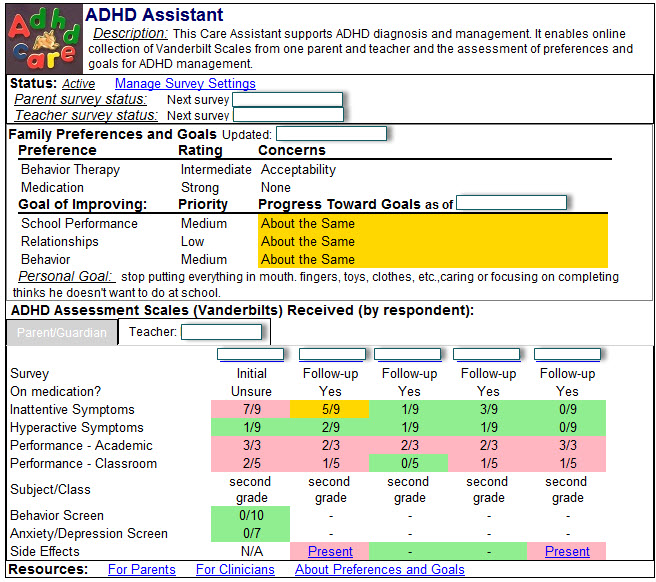Coordinating Care of Children with ADHD between Parents, School and Pediatricians
Attention-deficit/hyperactivity disorder (ADHD) is one of the most common behavioral disorders in children, with up to 11% of children aged 4-17 diagnosed. ADHD’s effects can be difficult for children and contribute to relationship problems with peers and family members. These effects can particularly impact a child’s school achievement.
Treatments for ADHD are typically delivered by two separate systems: primary care pediatricians and schools. Unfortunately, these systems are poorly connected, which can impede communication. For example, primary care clinicians face difficulties in obtaining information from teachers on children’s ADHD symptoms, a necessary component of ADHD diagnosis and management. Moreover, there is often little collaboration between the primary care practice and the school system in developing treatment plans and coordinating treatment implementation. As a result, parents are faced with difficult barriers in coordinating communication between pediatricians and teachers. This is particularly difficult for low-income families who are coping with multiple stressors and limited resources.
To overcome this barrier, we developed an electronic portal through which parents and teachers of children with ADHD can complete ADHD rating scales and share them with the child’s primary care pediatrician. Surveys are completed online, and email reminders are sent to parents and teachers at intervals set by the child’s clinician. Results of the surveys are then displayed directly in the child’s electronic health record.

Copyright, 2014. The Children Hospital of Philadelphia. Reprinted with permission.
We tested the feasibility of using this portal in a study with 105 primary care pediatricians and nurse practitioners at 19 Children’s Hospital of Philadelphia (CHOP) practices. We found that 67% of pediatricians used the portal with at least one patient, and 32% used it with at least five patients. Furthermore, pediatricians at practices with greater than 25% of Medicaid-enrolled patients had lower portal use than pediatricians at practices with fewer Medicaid patients. Although a high percentage of pediatricians used the portal, a number of barriers remained that impeded coordinated information sharing between parents, teachers, and primary care practices:
- Pediatricians reported that the process of enrolling families in the portal interrupted their normal workflow, and they often lacked procedures for managing electronic rating scales and consent forms.
- Parents responded to emails inconsistently – only 55% of patients who activated the portal had a parent survey completed.
- Teachers were only able to complete the survey if parents remembered to bring in an informational packet with teacher instructions. As a result, only 33% of patients completed a teacher survey.
- Finally, some school districts and teachers were reluctant to share information about their students electronically citing policies related to how the districts shared information.
Although we focused primarily on ADHD, the principles and strategies discussed in our study are applicable to a range of behavioral and emotional conditions for which obtaining multi-system information and input is beneficial. When considering implementation in the clinical setting, these findings highlight the importance of considering office workflow when implementing changes in primary care practices, and indicate a need to simplify the process of signing up parents and teachers to use electronic systems.
Pediatricians recommended getting office or nursing staff involved in signing families up for the portal, either during the visit or by mailing/faxing required forms to families in advance and having parents check their email during the office visit to confirm they received the survey notification. Meanwhile, teachers suggested that pediatricians could mail teacher forms directly to teachers instead of relying on parents to bring the form to the school. Additionally, in order to increase school system participation, teachers recommended holding discussions with county or state superintendents to ease teachers’ and school districts’ concerns about electronic information sharing.
Overall, electronic systems may help cross boundaries between families, primary care practices and school systems, but workflow changes in both primary care practices and the school system are likely needed to improve coordination of care for children with ADHD.

